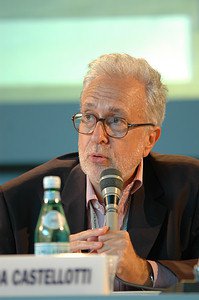From Caravaggio To Guido Reni. Triumphs Of Rome At The Turn Of The 17th Century
Exhibition coordinated by Marco Bona Castellotti
In terms of the figurative arts, the Jubilee of 1600 is only comparable to that of 1300. In fact the date of 1600 had been fixed and prepared some years before to celebrate an event suitable for sealing the long period of controversy which had strongly engaged the Catholic Church in reasserting ideal values, also codified by the Council of Trent.
The scenario that opened in Rome before and after the Jubilee, in the period between the advent to the papal seat of pope Clement VIII (1592) and the death of pope Paul V Borghese (1621), is extremely rich as regards the field of art as well. The Church was engaged in reasserting the conditions of its primacy, recovering cultural and figurative values which were to have appeared as the visible expression of a renewed awareness of the meaning of images.
The city was turned into an enormous stage, trodden by the very latest and pertinent testimonies of what was about to appear on the European scenario as a whole. Many of the artistic phenomena – painting, architecture and sculpture – that reached their heights in the 17th century, had already been anticipated at the end of the previous century and the decades between the 16th and 17th centuries saw the coexistence of different experiences that can be summed up as follows: on the one hand, the resistance of the official and solemn masters, still tied to Mannerism or inclined towards a certain communicative and illustrative naturalism, e.g., Federico Barocci; on the other, the new trends conveyed by a handful of painters such as Scipione Pulzone da Gaeta, which acted as a go-between for Mannerism and Realism, and which reverted towards the immortal model of Raphael, on yet another hand, the painters who see Raphael as a legend, as the celebrator of an ideal and “timeless” beauty, able to present the sacred image in contrast to the “aniconic” will of the Protestant religion; and again, the presence of artists who are the true bearers of 17th-century renewal, though belonging to different cultural roots: e.g., Annibale Carracci and Caravaggio; finally, a crowd of artists, including foreigners, who work in various roles to make Rome more splendid than ever.
The complexity of this period, is testified by the collective work of the worksites, all very busy, starting with the Basilicas of San Giovanni in Laterano, Santa Maria Maggiore and Santa Cecilia in Trastevere. Also strong is the commitment of the clients and great figures of the Catholic Church who, with their thought, founded the cultural background onto which the new and complex course of arts was grafted. We are speaking about San Filippo Neri, Cardinal Baronio, Cardinal Sfondrati and others.
After 1610, the year Caravaggio died, the scenario was still very varied and the “classic ideal” current was gaining ground, while some artists like Peter Paul Rubens, were already laying the foundations of Baroque art in 1607-1608, a style that was soon to develop. But the current of Caravaggio painters also made its mark, though the Caravaggio phenomenon was anything but unitary.
From an architectural viewpoint, Rome confirmed its monumental splendour and it was in Rome that, already before 1620, all those aspects of magnificence appeared that soon spread to the rest of Italy and Europe during the course of the 17th century.
Marco Bona Castellotti










